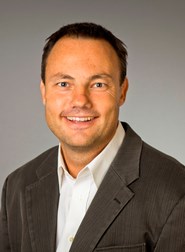
Virus-host cell interactions: implications for tropism, treatment, and targeting
The World Health Organization (WHO) has declared public health emergencies of international concern no less than seven times since 2009. All emergencies have been caused by different types of viruses: influenza virus (2009 – 2010), Ebola virus (2013 – 2015 and 2018 – 2020), poliovirus (2014 – ongoing), Zika virus (2016 – 2017), coronavirus (2020 – ongoing) and poxvirus (2022 – 2023). Virus-caused diseases, outbreaks, and pandemics constitute a global threat to public health and cause challelnges for health care and society. To address some of these challenges, WHO has identified more than ten different infectious diseases, to be prioritized with respect to research and development, and since these diseases are dangerous, are contagious, and since we have no or insufficient countermeasures, i.e. vaccines and antiviral treatments. All diseases pointed out by WHO – except one – are caused by viruses. The remaining diseases is described as ”Disease X” and is represented by the knowledge that a serious international epidemic can be caused by a pathogen currently unknown to cause human disease
Beyond the diseases pointed out by WHO – many can be described as ”tropical” there are many other viruses that are more common in Sweden and can cause more or less severe diseases, and that cause hospitals into ”state of readiness”. In part because of patient influx, in part because of staff also fall ill in these diseases, but also because some staff have to take care of sick children. Some, common virus-cause diseases can also result in, or increase the risk for secondary diseases such as cancer, cardiovascular disease, autoimmune diseases such as multiple sclerosis and diabetes type 1, asthma, and exacerbate diseases such as chronic obstructive pulmonary disease (COPD). The collective costs caused by virus-caused diseases is high, but exactly how high is unknown.
Virus-caused diseases cannot be treated with antibiotics. Vaccines and antiviral treatments are available for a few virus-caused diseases, but we lack such countermeasures against most virus-caused diseases.
Our group study molecules and mechanisms involved in virus entry into and infection of target cells. This is a critical step in the viral life cycle that commonly (but not always) determine which cells, tissues, and organs that are infected. This step is crucial for replication and transmission to other cells and to other humans. More and better knowledge about these molecules and mechanisms can be used to design and development of antiviral drugs. Such drugs can be used both for treatment but also for prevention of virus-caused diseases. If such, effecient drugs had been available in the beginning of the pandemic, we would have far less deaths caused by covid-19, and perhaps also fewer restrictions.
Viruses can also be ”designed” and ultimately used as tools – or ”vectors” for treatment of diseases such as cancer or inhereditary diseases. Some viruses can also be used as vaccines for prevention of diseases caused by other viruses or even other pathogens. Our research can contribute to design of vectors that ultimately target and kill specific cells of relevance i.e. cancer cells, and avoid other cells.
Our group has identified several cellular receptors that different viruses use for entry and infection. This knowledge has been – and can be – implemented to design, produce and evaluate antiviral drugs in clinical trials. In our research we use advanced cell models called organoids as substitutes for animal models. We also use stat-of-the-art tools such as CRISPR-Cas9 to modify viruses and cells, advanced microscopy and flow cytometry. We also collaborate with leading scientists in other areas of research, such as chemistry, structural biology, carbohydrate biology and medicine.
Our research is currently supported by grants from the European union, The Swedish Research Council, The Swedish Cancer Society, and Umeå University’s medical faculty.